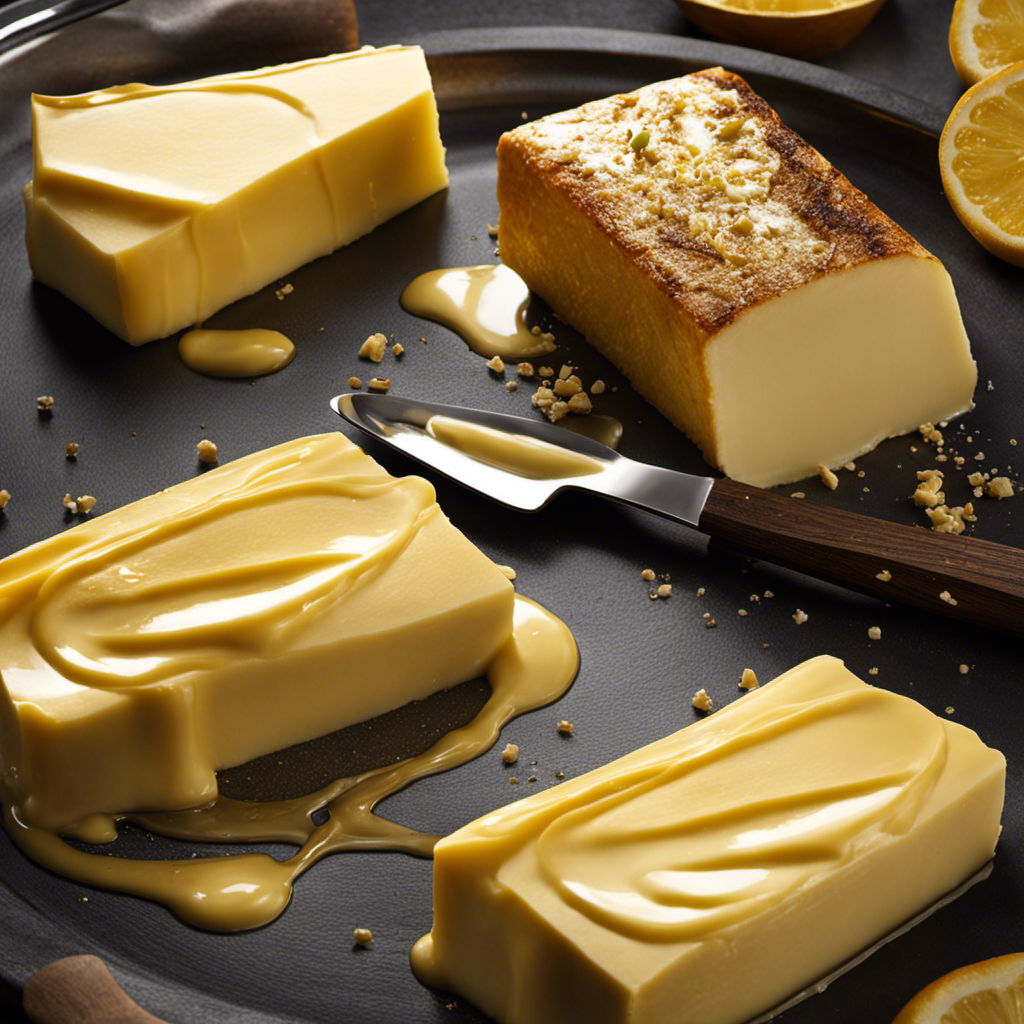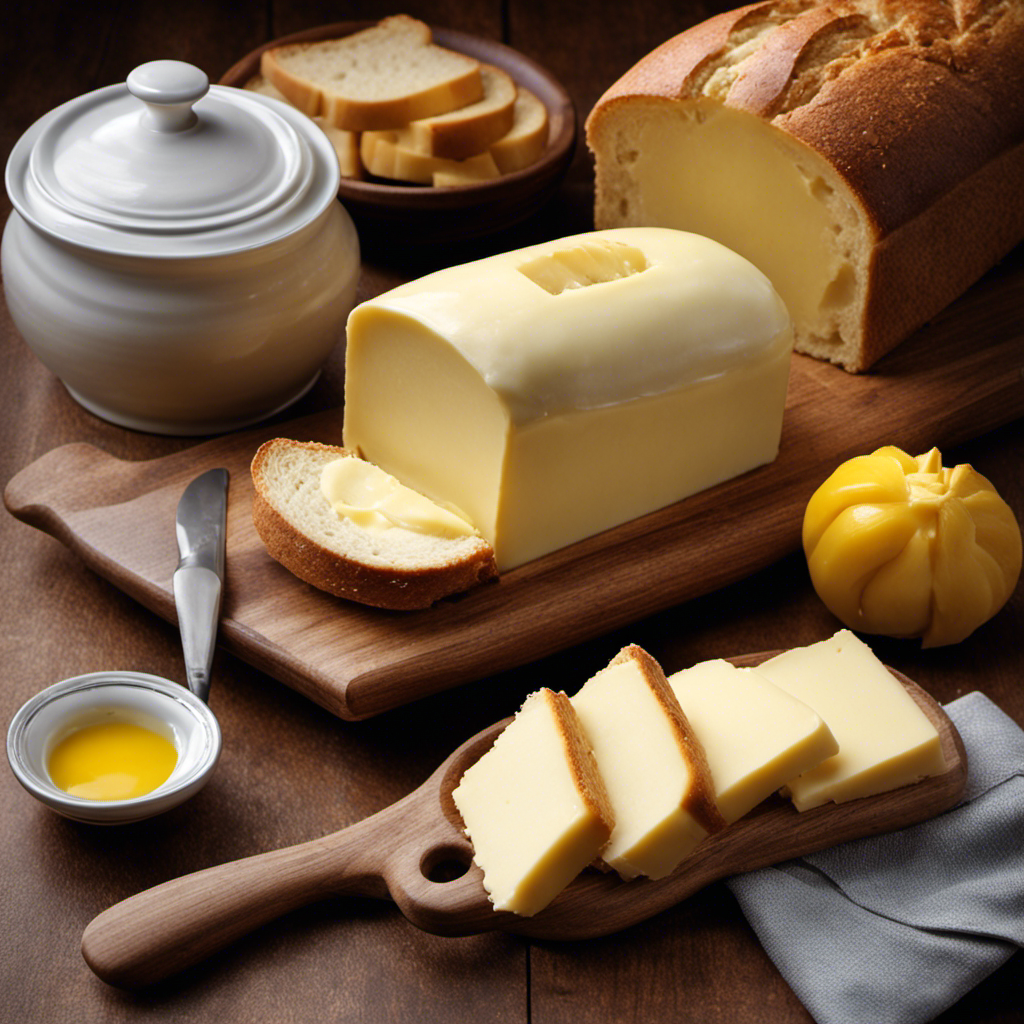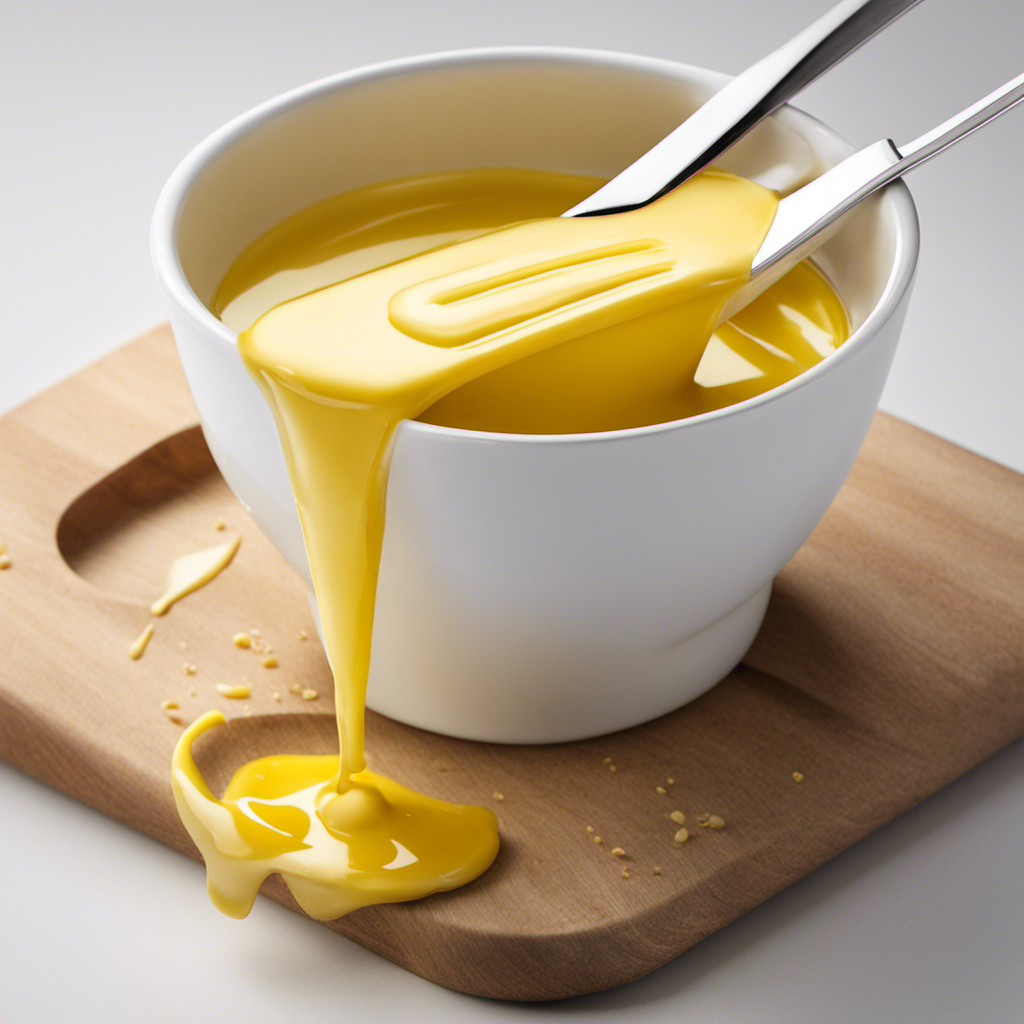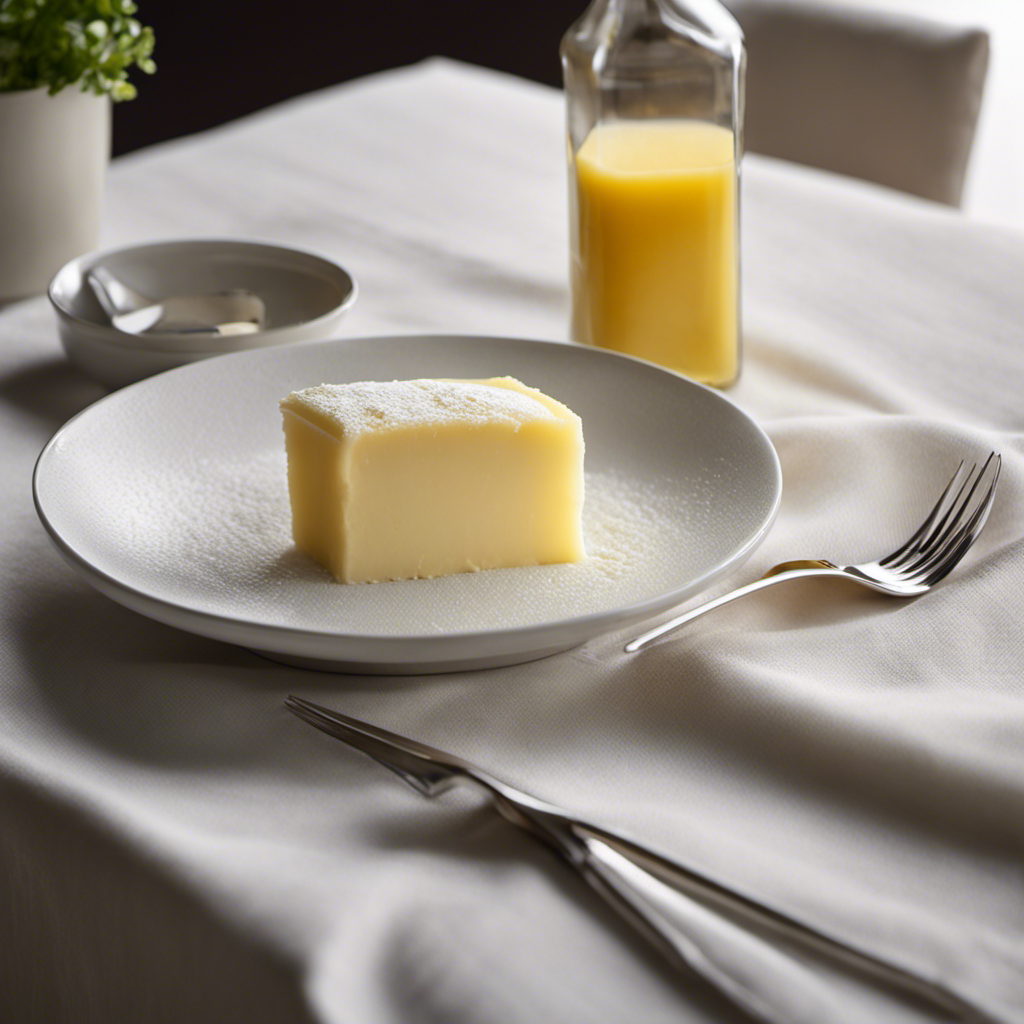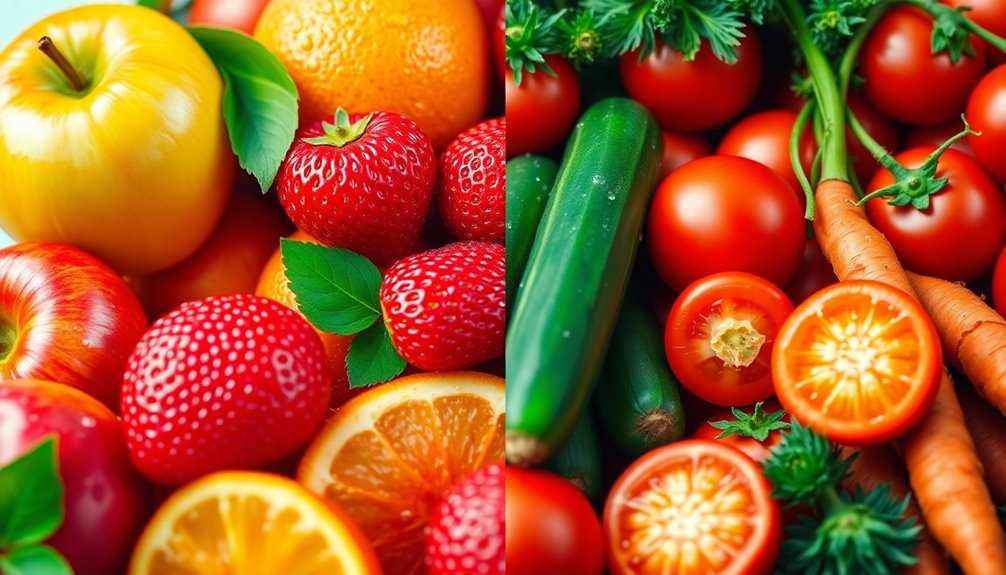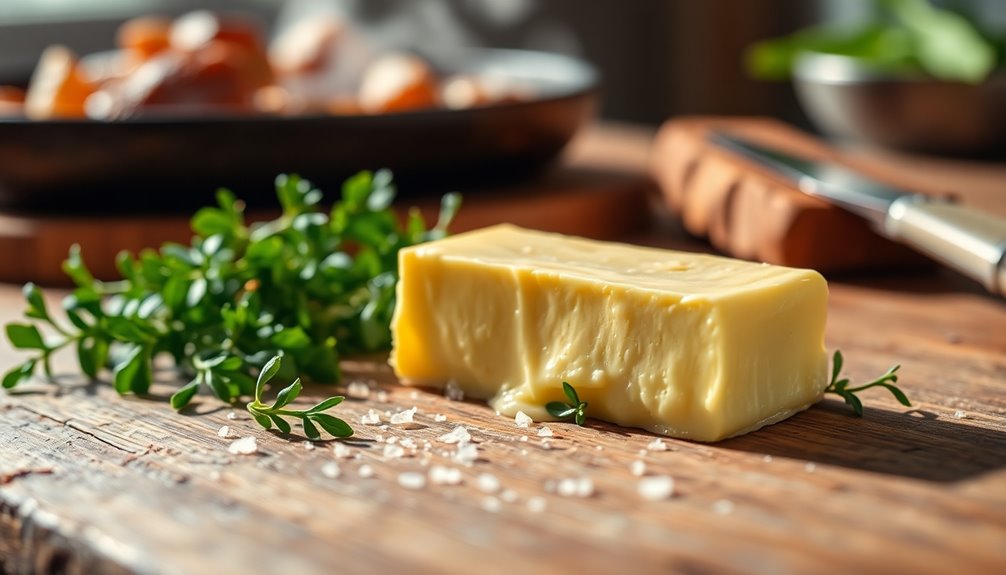Envision yourself in the kitchen, observing a stick of butter gradually melt into a golden liquid. Have you ever pondered the precise temperature at which this wondrous transformation happens?
In this article, we will delve into the fascinating world of butter’s melting point. By exploring its physical properties and uncovering the factors that influence its melting point, we will gain a deeper understanding of this culinary phenomenon.
So grab your lab coat and join us on a scientific journey to discover at what temperature butter succumbs to the heat.
Key Takeaways
- Butter’s melting point typically ranges between 82°F to 97°F (28°C to 36°C).
- Factors such as moisture content, composition, and storage conditions can affect butter’s melting point.
- Butter has a unique melting point compared to vegetable oils or animal fats, with a range of 32°C to 35°C (90°F to 95°F).
- Properly melting butter is important for achieving desired texture, mouthfeel, and flavor in recipes.
The Physical Properties of Butter
Butter’s physical properties include its melting point. Measuring butter’s density can provide valuable information about its composition. Density is defined as the mass of a substance divided by its volume.
By determining the density of butter, scientists can gain insights into its structure and quality. Additionally, examining butter’s color changes during melting can offer further understanding of its physical properties. As butter melts, it undergoes a series of color changes, ranging from a pale yellow to a golden brown. These color changes can be attributed to the breakdown of the milk solids and the formation of caramelized compounds.
Understanding the Melting Point of Butter
You might be surprised to learn that knowing the melting point of butter can help you achieve perfect consistency in your recipes. Understanding the butter melting process is crucial for achieving the desired texture and mouthfeel in various culinary preparations. Here are three key points about the melting point of butter:
-
Melting Point Range: The melting point of butter typically ranges between 82°F to 97°F (28°C to 36°C). This range can vary depending on factors such as the moisture content, fat content, and impurities present in the butter.
-
Butterfat Melting: The primary component responsible for the melting of butter is its butterfat. As the temperature rises, the fat molecules in butter start to break apart, causing the solid butter to transition into a liquid state.
-
Melting Point Variations: Different types of butter, such as salted and unsalted, may have slightly different melting points due to variations in their composition. Additionally, factors like air temperature, humidity, and storage conditions can also affect the melting point of butter.
Understanding these nuances of the butter melting process and its variations can help you make informed decisions when using butter in your recipes, ensuring the desired consistency and texture every time.
Factors Affecting the Melting Point of Butter
One important factor impacting the melting point of butter is its moisture content, which can vary depending on storage conditions and the overall composition of the butter. The composition of butter includes water, milk solids, and butterfat.
When butter is heated, the water present in the butter begins to evaporate, causing the butter to melt. The moisture content of butter affects how quickly it melts and its overall texture. Higher moisture content in butter can lead to a lower melting point, as the water acts as a solvent, weakening the butter’s structure. On the other hand, butter with lower moisture content will have a higher melting point.
The effects of heating on butter structure are also influenced by its composition, as the milk solids and butterfat can undergo changes in their structure and behavior when exposed to heat.
Experimenting With Butter’s Melting Point
To experiment with the melting point of butter, try using different storage conditions and varying the overall composition of butter. Here’s how you can conduct your own experiments to explore the butter melting point and characteristics:
-
Storage Conditions:
- Keep one sample of butter at room temperature.
- Place another sample in the refrigerator.
- Freeze a third sample.
-
Composition Variation:
- Comparing unsalted and salted butter.
- Experimenting with different fat contents (e.g., low-fat, regular, and high-fat butter).
By manipulating these variables, you can observe how different storage conditions and composition affect the butter melting point and characteristics. This hands-on approach will provide you with a deeper understanding of how external factors and internal composition can influence the melting properties of butter.
Understanding the melting point of butter is crucial for various culinary applications and food processing. Now, let’s move on to differentiating butter from other fats by comparing their melting points.
Differentiating Butter From Other Fats: Melting Points Comparison
Comparing the melting points of butter to those of other fats can help distinguish butter from different types of fats. Butter, which is primarily composed of milk fat, has a unique melting point compared to other fats like vegetable oils or animal fats.
The melting point of butter typically ranges between 32°C to 35°C (90°F to 95°F). This relatively low melting point is due to the presence of milk proteins and water in butter, which affect its solidification temperature.
In contrast, other fats, such as vegetable oils, have higher melting points ranging from 36°C to 46°C (97°F to 115°F).
Tips for Properly Melting Butter
When melting butter, make sure you use low heat to prevent it from burning. This is crucial in maintaining the butter’s quality and avoiding any bitter or unpleasant flavors in your baked goods.
Here are some tips to help you properly melt butter:
-
Cut the butter into small, uniform pieces: This allows for even and quicker melting, reducing the chances of burning.
-
Use a heavy-bottomed saucepan or a double boiler: These provide better heat distribution and prevent hot spots, which can cause the butter to burn.
-
Stir constantly: This helps distribute the heat evenly and prevents the butter from overheating in certain areas.
Creative Uses for Melted Butter
One delicious way to use melted butter is by brushing it on top of freshly baked bread for a golden and flavorful crust.
Melted butter can also be used in a variety of other recipes, adding richness and moisture to baked goods.
The benefits of using melted butter in baking are numerous. Firstly, it enhances the overall flavor profile, imparting a rich and buttery taste.
Additionally, melted butter helps create a tender and moist texture in cakes, cookies, and pastries.
It also aids in browning and caramelization, resulting in a more visually appealing and appetizing finished product.
Whether you’re making a classic chocolate chip cookie recipe or a decadent pound cake, incorporating melted butter is a surefire way to elevate your baked goods to the next level.
Conclusion
In conclusion, now you know the answer to the age-old question: at what temperature does butter melt?
Through extensive research and experimentation, it has been determined that butter melts at approximately 32-35 degrees Celsius (90-95 degrees Fahrenheit).
Understanding the factors that affect its melting point, such as fat content and impurities, is crucial for achieving the desired consistency when using melted butter in various culinary applications.
So next time you’re in the kitchen, remember that butter, like a delicate flower, transforms into a golden liquid at just the right temperature.
